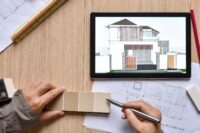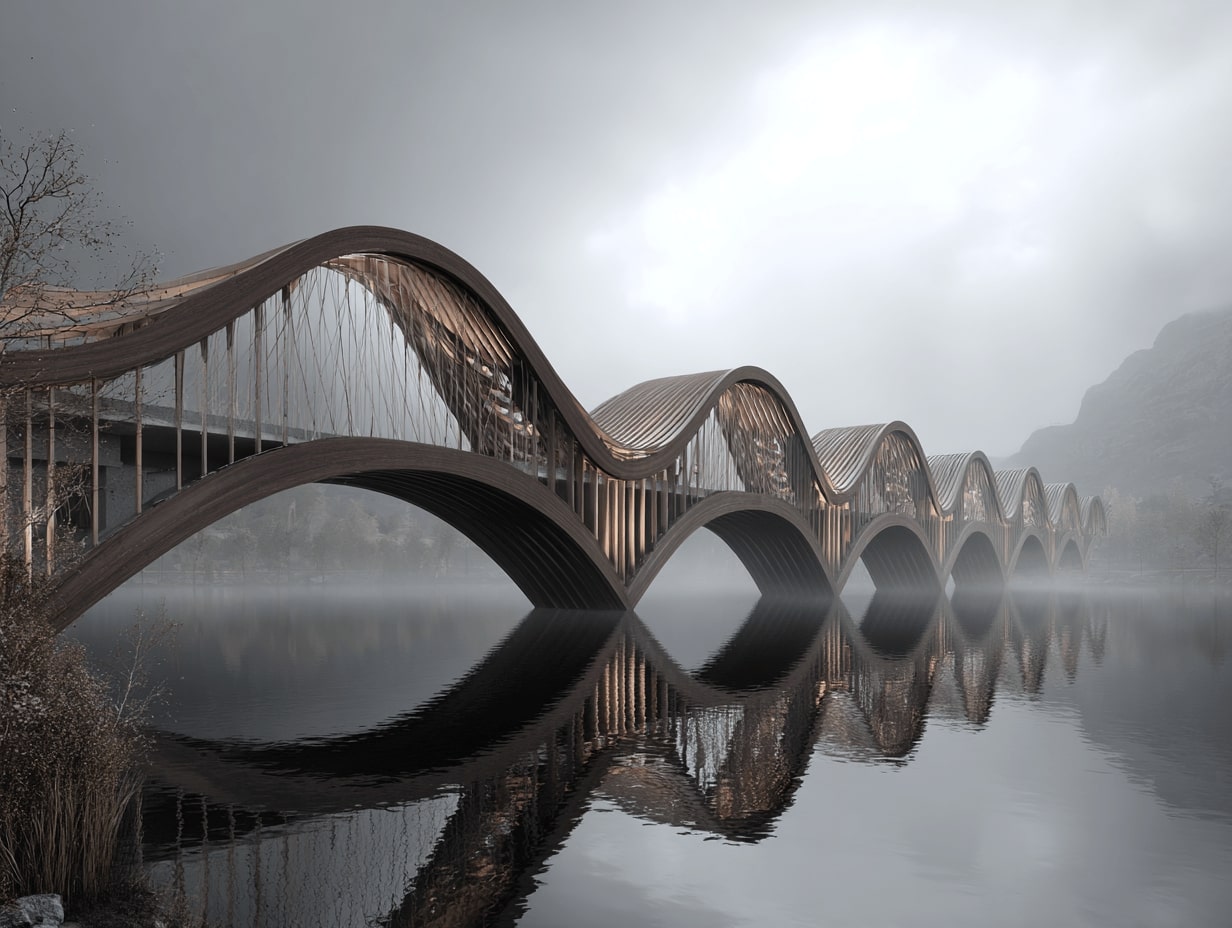- Home
- Articles
- Architectural Portfolio
- Architectral Presentation
- Inspirational Stories
- Architecture News
- Visualization
- BIM Industry
- Facade Design
- Parametric Design
- Career
- Landscape Architecture
- Construction
- Artificial Intelligence
- Sketching
- Design Softwares
- Diagrams
- Writing
- Architectural Tips
- Sustainability
- Courses
- Concept
- Technology
- History & Heritage
- Future of Architecture
- Guides & How-To
- Art & Culture
- Projects
- Interior Design
- Competitions
- Jobs
- Store
- Tools
- More
- Home
- Articles
- Architectural Portfolio
- Architectral Presentation
- Inspirational Stories
- Architecture News
- Visualization
- BIM Industry
- Facade Design
- Parametric Design
- Career
- Landscape Architecture
- Construction
- Artificial Intelligence
- Sketching
- Design Softwares
- Diagrams
- Writing
- Architectural Tips
- Sustainability
- Courses
- Concept
- Technology
- History & Heritage
- Future of Architecture
- Guides & How-To
- Art & Culture
- Projects
- Interior Design
- Competitions
- Jobs
- Store
- Tools
- More
How Parametric Design is Shaping the Skyline of Tomorrow: Innovations & Trends

Imagine walking through a city where every building is a unique masterpiece, each one adapting perfectly to its environment. This isn’t a distant dream; it’s the reality that parametric design is bringing to life. By using algorithms and data-driven processes, architects and designers are crafting structures that are not only visually stunning but also incredibly efficient and sustainable.
As we embrace this cutting-edge technology, our skylines are transforming in ways we’ve never seen before. Parametric design allows us to push the boundaries of traditional architecture, creating buildings that respond to their surroundings and the needs of their inhabitants. From optimizing natural light to improving energy efficiency, the possibilities are endless. Let’s explore how this innovative approach is reshaping the future of urban landscapes.

Table of Contents
ToggleUnderstanding Parametric Design
Parametric design uses algorithms to generate intricate architectural forms. It’s data-driven and adaptable.
The Basics of Parametric Design
Parametric design involves creating rules and parameters to define the relationships between different design elements. Instead of manually drawing each line, architects input variables and constraints into software. The software then explores numerous design possibilities, adjusting the parameters automatically. For example, changing the height of a building might automatically alter its shape and window placements to maintain structural integrity and aesthetic coherence.
Evolution and Technological Integration
Parametric design has evolved alongside technological advances in computing and software development. Early experiments used simple algorithms, but today, parametric design leverages complex data sets and advanced software like Rhino and Grasshopper. These tools enable architects to simulate environmental conditions, such as sunlight and wind patterns, and adjust the design accordingly. For instance, the Al Bahar Towers in Abu Dhabi feature a dynamic facade that responds to sunlight, reducing glare and cooling costs. This evolution fosters innovative architectural solutions that are both beautiful and functional.
Impact on Modern Architecture
Parametric design significantly influences modern architecture, pushing the boundaries of creativity and innovation. This impact manifests through enhanced building designs and iconic skyscrapers.
Enhancements in Building Designs
Parametric design optimizes building designs for aesthetics and functionality. Algorithms allow architects to explore complex geometrical forms, resulting in unique and visually appealing structures. For example, algorithms optimize spatial layouts to maximize natural light and ventilation, reducing energy consumption. Structural integrity also improves by using materials efficiently, minimizing waste and lowering costs. Additionally, architects can simulate environmental conditions, adjusting designs for better performance in real-world settings.
Case Studies: Iconic Skyscrapers
Several iconic skyscrapers exemplify the transformative power of parametric design. The Guangzhou International Finance Center in China uses parametric algorithms for its aerodynamic form, reducing wind load and structural strain. The Torre Reforma in Mexico City incorporates a twisted design, enhancing its structural resilience against earthquakes. The most notable is The Shard in London, which employs parametric tools to create its irregularly tapered shape, offering breathtaking city views while optimizing structural efficiency. These buildings highlight how parametric design enables architects to create landmark structures that push conventional boundaries.

Parametric Design Techniques and Tools
Parametric design leverages advanced tools and methodologies to revolutionize architectural practices. By integrating algorithms, software, and innovative techniques, we unlock unprecedented design possibilities.
Software Powering Parametric Design
Several software tools are pivotal in parametric design. Rhino, paired with Grasshopper, stands out due to its versatility in creating complex geometries. Rhino handles the intricate modeling, while Grasshopper allows us to generate scripts for design variations. Dynamo, used within Autodesk Revit, streamlines building information modeling (BIM) workflows. Through its node-based visual programming, it enables architects to produce parametric designs directly within the Revit environment, enhancing interoperability.
| Software | Primary Use | Key Features |
|---|---|---|
| Rhino + Grasshopper | Complex geometries, scripting | Visual programming, robust plugin ecosystem |
| Dynamo | BIM integration within Revit | Node-based programming, direct Revit integration |
| Blender | Versatile 3D modeling, rendering | Open-source, extensive range of modifiers |
| Maya | Animation, simulation for intricate designs | Advanced animation tools, dynamic simulations |
Each tool contributes uniquely to the parametric design process, enabling the creation of sophisticated structures that adapt in real-time to varying constraints and requirements.
Innovative Techniques in Parametric Modeling
Parametric modeling employs several innovative techniques to enhance design efficiency and creativity. Algorithmic design, which relies on scripting, explores numerous design iterations swiftly by changing input parameters. Generative design uses artificial intelligence to optimize layouts based on performance criteria. Using simulations, it predicts outcomes like structural performance or environmental impact.
Adaptive facades represent a standout application of these techniques. They react dynamically to environmental changes, optimizing energy efficiency. For instance, the Al Bahar Towers in Abu Dhabi feature a responsive facade that adjusts to sunlight intensity, reducing heat gain and glare.
Optimizing material usage is another critical technique. This involves utilizing algorithms to distribute and minimize material resources for enhanced structural performance and sustainability. By employing these techniques, we craft resilient, efficient, and visually captivating structures.

Challenges and Solutions
Parametric design shapes tomorrow’s skyline, yet several hurdles arise.
Addressing Design Complexity
Parametric design introduces significant design complexity. Architects face intricate variables and constraints which require advanced skills and software knowledge. Parametric modeling tools like Grasshopper and Dynamo streamline the process, enabling us to manage complex relationships between design elements effectively. By utilizing sophisticated algorithms, we can automate these complexities, explore multiple design iterations quickly, and ensure structural integrity and aesthetic appeal.
Overcoming Implementation Hurdles
Implementation hurdles in parametric design include the integration of data-driven processes, collaboration between different teams, and ensuring construction feasibility. To solve this, BIM (Building Information Modeling) platforms facilitate smoother collaboration across various disciplines. We leverage these platforms to align architectural intentions with engineering constraints, ensuring feasible builds. Real-time updates and data sharing in BIM reduce errors, enhance communication, and improve project efficiency, facilitating the seamless realization of parametric designs.
Future Trends in Parametric Architecture
Emerging trends suggest that parametric architecture will revolutionize urban landscapes, driving innovation in design and functionality.
Predictions for Next-Generation Skylines
Next-generation skylines will feature intricate parametric designs shaping futuristic cityscapes. Key trends include:
- Dynamic Facades: Adaptive buildings using kinetic elements to adjust based on environmental conditions. Examples include shading systems that respond to sunlight intensity.
- 3D Printing Integration: Advanced 3D printing technologies will be used to create complex, customized structures, reducing construction time and cost. Projects like Dubai’s 3D-printed office demonstrate this potential.
- Smart Materials: Utilization of materials with responsive properties to enhance building performance. Smart glass that changes opacity based on light levels offers improved energy efficiency.
- Mixed-Use Developments: Integrated residential, commercial, and recreational spaces optimized using parametric algorithms to maximize utility and user experience.
Sustainable Design and Green Technology
Sustainability concerns drive the adoption of parametric design in architecture. Important sustainable trends include:
- Energy Efficiency: Buildings designed to minimize energy consumption through optimized shading, ventilation, and insulation. Parametric tools allow for precise modeling of these factors.
- Renewable Energy Integration: Structures incorporating renewable energy solutions like solar panels and wind turbines. Examples include buildings with rooftop solar arrays tailored to maximize sun exposure.
- Water Management Systems: Implementing rainwater harvesting, greywater recycling, and other sustainable water practices. Designs factor in regional rainfall patterns using parametric data.
- Eco-Friendly Materials: Use of sustainable, low-impact materials in construction. Parametric design ensures efficient material use, reducing waste and environmental footprint.
Parametric architecture is at the forefront of creating sustainable, innovative, and efficient buildings that define the skylines of the future.

Conclusion
Parametric design is significantly impacting the architecture landscape. With advanced tools like Rhino and Grasshopper, we’re seeing more optimized, efficient structures. Iconic examples like the Al Bahar Towers highlight the aesthetic and functional benefits achievable.
Energy efficiency and sustainability drive parametric design adoption. Buildings now integrate renewable energy sources and smart materials to reduce environmental impact. Complex design challenges are addressed using sophisticated software and collaborative approaches among multidisciplinary teams.
Future trends indicate even more transformative changes. Dynamic facades, 3D printing integration, and smart materials will shape our future skylines. These innovations highlight the continuously evolving nature of parametric design. The focus remains on creating sustainable, innovative, and efficient buildings for tomorrow’s cityscapes.
Submit your architectural projects
Follow these steps for submission your project. Submission FormLatest Posts
Top 10 Examples of Parametric Architecture Around the World
Parametric architecture is reshaping global design through computational tools that generate fluid...
10 Notable Architects Who Excel in Parametric Design
Discover 10 leading architects who excel in parametric design, showcasing how computation,...
Parametric Design in Bridge Architecture: From Idea to Ribbon-Cut
Parametric design in bridge architecture: how data, rules, and optimization speed iterations,...
8 Principles of Parametric Architecture You Should Know
Parametric architecture merges computational logic with creative exploration, allowing designers to generate...












Leave a comment